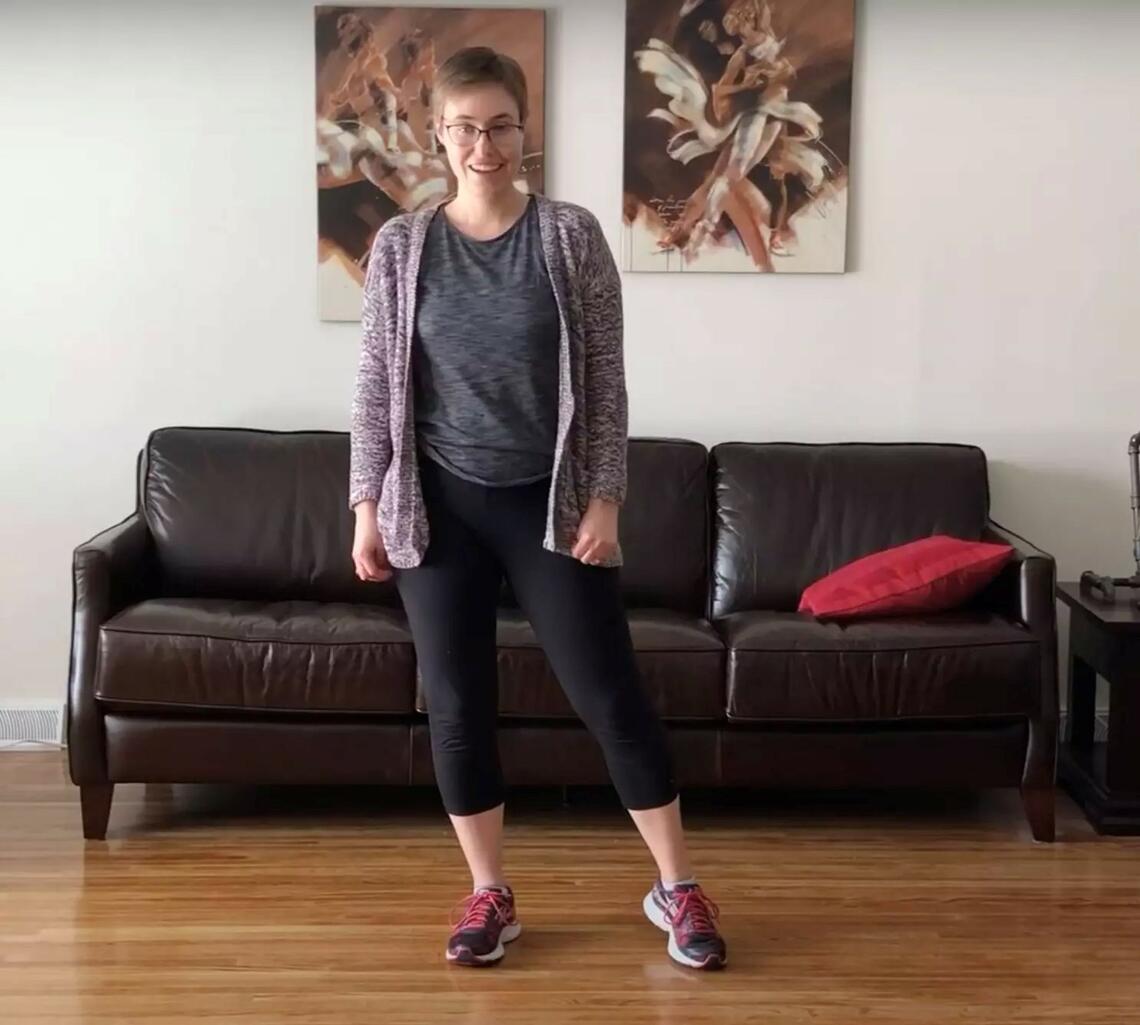March 16, 2023
Older adults put on their dancing shoes for physical and mental well-being

Older adults are getting groovy in effort to live more active, happy and social lives.
Jenna Magrath, BA’22, BKin’22, who completed a combined degree in kinesiology and dance, has researched the positive influence of community dance with this fast-growing demographic.
In her study published in Research in Dance Education, “Instructor Strategies to Support Older Adults’ Physical Literacy in Community Dance Classes,” Magrath concludes that dance in this context, due to its fun, creative and social nature, enables physical literacy, which empowers dancers to value and stay physically active.
“I specifically looked at the teaching strategies the instructor leading a community dance class for older adults employed, and worked to understand what she was doing in that class that may help older adults to express their physically literacy,” says Magrath.
The dance program she studied provides opportunity for participants, ages 60 and older, to be physically and socially active, components of physical literacy. “I think dancing in general is something that is super vulnerable and scary and can be intimidating, so it’s important to offer the opportunity to dance in a safe space,” says Magrath, whose work was supervised by Dr. Cari Din, BA’97, MSc’01, PhD’13, and Dr. Sarah Kenny, BA’01, PhD’17.
“This is especially important as the population continues to age so that we may help people to age well and maintain their physical, cognitive and social wellness, as well as their independence to continue living fulfilling lives,” says Magrath.
This supported her study’s other conclusion that it is crucial to provide opportunities for individuals at all ages to become more physically literate for their health and well-being.
“By helping to support older adults' physical literacy, we can help them to be motivated to engage in regular physical activity so that they can receive the health and well-being benefits of physical activity,” Magrath says, adding her research falls under the category of “Dance for health.”

Krista White instructed the classes for older adults from her home during COVID-19.
Krista White
Dance and social time
Prior to the COVID-19 pandemic, the program, which was designed by Professor Emerita Anne Flynn, took place in a basement of a church through the University Heights Community Association. The classes consisted of an hour of dance instruction followed by social time and refreshments. Once COVID hit, the classes were recorded by the dance instructor, Krista White, BA’10, MA'12, in her living room, with videos divided into four shorter segments that could be followed online.
“The first [online class] started with a warmup following Anne Green Gilbert’s brain-compatible dance, philosophy and principles, and that lasted about 20 minutes, and then they did some standing work and then moved into some more creative dancing combinations,” says Magrath. She took note of what the instructor was doing and how she was helping the older adults not only in physical ways, but also how she was contributing to them having confidence in themselves and their movement.
First research experience
This work, as part of her undergraduate honours thesis, was Magrath’s first research experience, and she had to learn how to engage and conduct research with professors, with the added COVID-related challenge of having to follow fellow researchers from home.
“I think, when you’re doing qualitative research in person and you’re in the lab with people, it’s a little bit easier to have conversations and discuss what your results mean and how you’re coming to your conclusions,” says Magrath. “But, in the online world, it was a little bit tricky, and I think we were all trying to figure out how to navigate that in the best way.”
Magrath presented her work at the International Association for Dance Medicine and Science (IADMS) annual conference in 2021. “It was really rewarding and exciting that I was able to present that work there, but also having this research put in the context of the larger picture of dance for health and dance for health promotion on a global scale,” Magrath says.
“We don’t have a lot of literature describing what happens in a dance class and what the teachers are doing in a dance class … I think just knowing that my research filled this missing gap, and this missing link, was exciting to hear.”
Magrath says she hopes her research findings will help instructors wanting to work with the older population. “It is a lot different than teaching in a dance studio with children and adolescents,” she says.
Magrath has continued to work and research in the field of dance science since graduating. She hopes to pursue a master’s in the near future with ambitions to complete a PhD, and one day teach in the field of dance science at a post-secondary institution.







